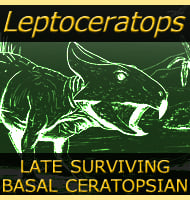In Depth
Named in 2007, Mahakala has been widely accepted as one of the most primitive formed dromaeosaurids so far discovered. Key to this idea is the observation that the third metatarsal is not compressed, whereas in more advanced dromaeosaurids and troodonts it is. However another fact to consider is that Mahakala lived during the Campanian of the Cretaceous, a time when dromaeosaurids had long been established. This means that Mahakala was a late surviving form that co-existed with the development of more advanced forms, perhaps specialising as a niche predator. This also does not disprove evolutionary theory, as it should be remembered that evolutionary processes only drive animals to change when there is a need too. When there is no need, an animal’s evolution can slow down and even stop.
Currently Mahakala is best known from the hind limbs and anterior half of the tail, but forelimb remains are also known and these are interesting as they are proportionally much shorter than the arms of other dromaeosaurids. These shorter limbs may or may not be another primitive feature, they may have been an adaptation unique to the genus. As mentioned above the small size of Mahakala probably meant that it was a specialised hunter of small animals such as lizards and primitive mammals like Zalambdalestes, perhaps even larger insects. This meant that Mahakala did not directly compete with its larger relatives such as the dromaeosaurs Tsaagan and the famous Velociraptor.
Further Reading
- A basal dromaeosaurid and size evolution preceding avian flight. - Science 317 (5843): 1378–1381. - Alan H. Turner, Diego Pol, Julia A. Clarke, Gregory M. Erickson & Mark Norell - 2007.










